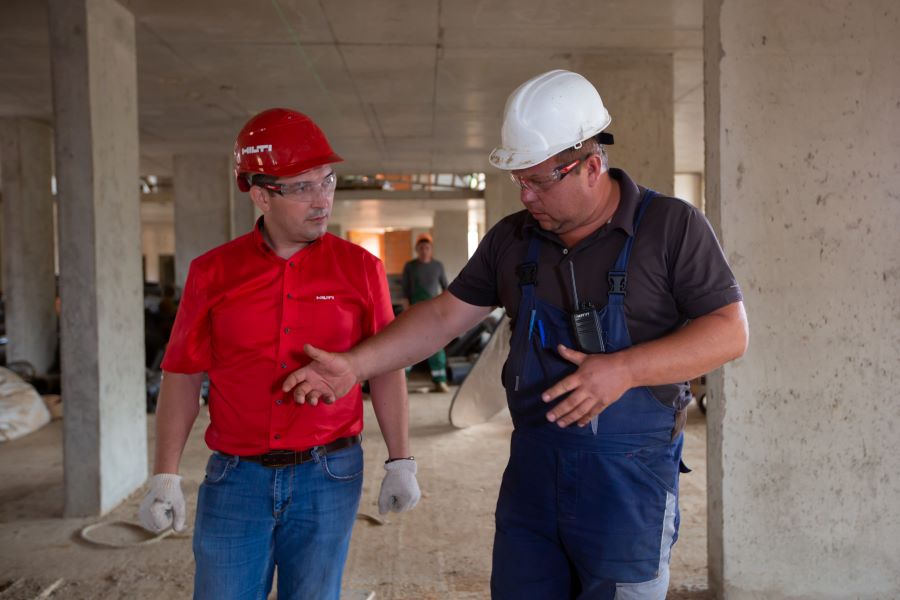Vertical lifts have proven to be an excellent tool for improving your business’ productivity and operations. It’s likely one of the most used vehicles in your operations because of its functionality, but if you don’t instruct your team on the proper safety precautions during lifting operations, their livelihoods and safety could be at risk.
In the construction industry, falls are one of the leading causes of death. So, it’s detrimental that you create and implement safety systems for when your team is using a lift for their tasks. We’ve listed below some critical safety procedures you can adapt to your business to make it a safer place. Keep reading to learn more!
Train Operators
The first thing on your employee’s lifting operation safety checklist should be training. Your workers should first be instructed on how to operate the vertical lift’s controls and the safety capacity for each unit. Properly training your operators is a key part of their safety especially when lives are on the line.
Once you’ve conducted a basic training module that touches on controls, unit capabilities, and safety features you can rest easy knowing that they’re equipped with the knowledge to operate.
Of course, you’ll also need to inculcate the value of having a buddy system and an operations tracker. That way should anything go wrong during operations, you have a system in place to contact and track your employees.
Inspect the Site
Before deploying your employees and choosing a lift to use, you’ll need to have your supervisors inspect the site. This is so you can select the correct tools and check if it’s safe to continue with any vertical operations for the day.
Here are some of the things to watch out for before sending your operators out:
- What is the terrain? Is it rough or smooth?
- Are there any potholes on the work site?
- Is the working area leveled?
- Are there any civilians walking or working around the area?
- Are the weather conditions for the day good?
- Are there any electrical wires near the site?
- Are there any structures that can endanger your team members?
- What working height do you need to complete the operations?
When they’ve completed these lifting operation safety checks, you can now understand whether it’s safe to proceed with your operations or not. Remember that choosing the right lifting equipment is critical to safeguarding your employees’ safety.

Inspect the Unit
Once your employees have gotten acquainted with the lift’s systems and the working environment, it’s time to move on to inspection. Before they embark on their task, it’s critical that they examine the lift’s parts to ensure that it can operate safely.
Here are some things they’ll need to inspect for their safety:
- Are the tires free of any damage?
- For diesel lifts, does the unit have enough fuel for the job?
- For electric lifts, does the unit have enough power to finish the task?
- Does the unit have enough fluids to keep it working smoothly?
- Are the guard rails immobile and stable?
- Are there any loose parts?
- Are there any leaks?
- Are the buttons responsive and easy to manipulate?
- Are the level sensors and alarms working?
As soon as they’ve gone through this checklist and tested the unit out in a safe space, they can now get started on their task.
Proper Body Mechanics
When you’ve deployed your operators to the project site, they’ll need to remember that they need to practice proper body mechanics and safety precautions to be safe. Listed below are some reminders you can give them to ensure their safety:
- Stay within the vertical lift’s basket.
- When loading heavy things onto the unit, lift with your legs and not your back.
- Always have two firm feet placed on the lift.
- Hold on to the handrails when the vehicle is moving.
Protective Clothing
Lastly, you’ll need to supply your employees with the proper protective clothing to safeguard their health. Providing your teammates with helmets and harnesses for your operations is something you can do.
Lanyards and fall arrest systems are other safety features that vertical lift manufacturers recommend. Just make sure that the lanyard’s length is made according to the manufacturer’s standard and that it’s attached to the lift’s restraining point.
Vertical Safety With CMI Equipment
The most important part of any business is guaranteeing that your employees have properly maintained tools that can help them get the job done. When it comes to lifts for construction, residential, or utility operations you’ll need to find the right unit for the job.
If you’re looking for a reliable partner that can help you accomplish this, you can rely on us at CMI Equipment. We can provide you with expert advice on what unit you can add to your operations to boost your productivity.
Contact us today to receive a free quote!



